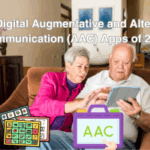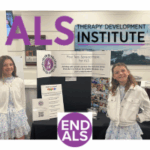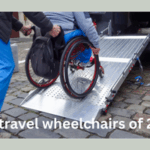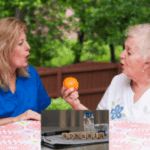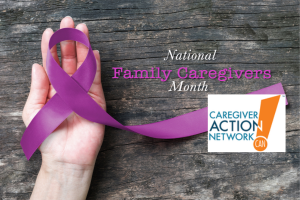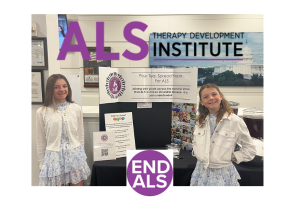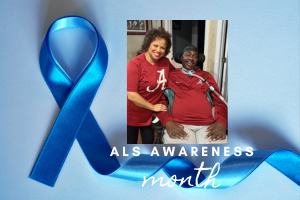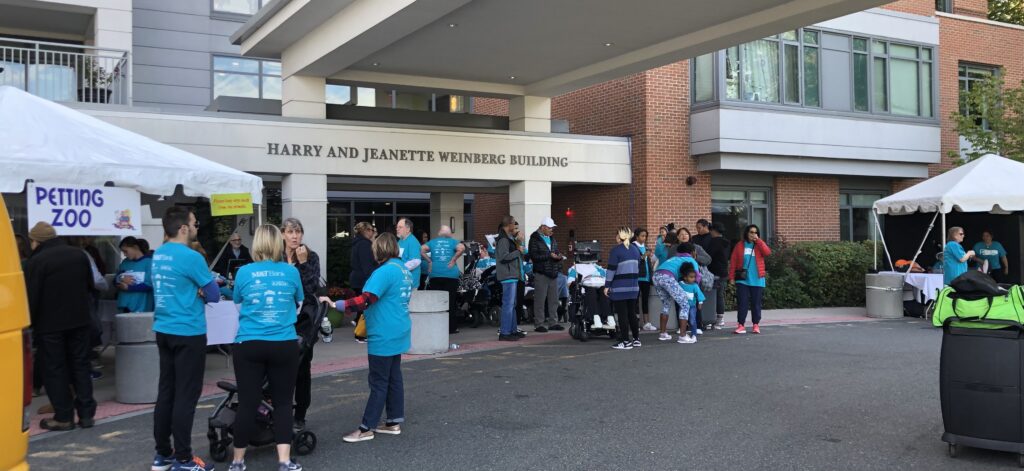 Scenes from 2019 ALS Walk for Living, Leonard Florence Center for Living, Chelsea, Massachusetts
Scenes from 2019 ALS Walk for Living, Leonard Florence Center for Living, Chelsea, Massachusetts
On September 18, our friends at the Leonard Florence Center for Living in Chelsea, MA are hosting their annual ALS Walk for Living. This event is a community celebration and fundraising occasion that takes place on Admiral’s Hill in Chelsea.
The ALS Walk for Living proceeds benefit the Leonard Florence Center for Living, which cares for more individuals living with ALS than any place in the world.
Joanna Rosenberg, SimpliHere’s founder, was the lucky recipient of a tour of the Florence Center this past June.
“I loved seeing how Mike was able to operate his electricity, bed position, and several bath functions in his apartment using his tablet. Seeing Michael’s books and photos highlighted his scientific mind and how he has embraced any technology that will help him live with ALS,” Joanna says.
Here is an excerpt from Mike’s tour.
Hi, my name is Mike Scott and I’m a resident here at the Leonard Florence Center for Living.
Prior to being symptomatic with ALS, I worked as an engineer and manager of a small family business. I wasn’t diagnosed with ALS until 2011, but I felt something was wrong as early as August of 1995. I had remained physically active since high school and went to the gym five to six days per week.
I have a B.S. in chemistry from Northeastern University, and in 2005 I was planning to go to grad school to study synthetic organic chemistry in the renewable energy field. However, I had become unstable on my feet and, after multiple falls and injuries, culminating in a fall where I broke two vertebrae (T11 & T12) and suffered a spinal cord injury that further weakened my legs, I knew that I wouldn’t be able to work safely in a lab.
I decided to suspend my education plans until I found out what was going on with my health. In 2011, I realized that the 55 minutes it had taken me for years to walk a four-mile course had, almost overnight, increased to 65 minutes, and I sensed something was wrong. After a great deal of testing, my doctors told me I had ALS. As far as ALS goes, I have had an extremely slow progression; I’m now in my 27th year. Statistically, I’m an outlier among outliers. And I am lucky to live at LFCL.
The name of the program we use here at LFCL to control the connected equipment in the building is called “PEAK.” The software is installed on a server in the basement, and we connect to it wirelessly through any web enabled device, even a smart phone.
The server recognizes each individual through a log-in and password that gives control to that user’s environment. There are microwave transmitters on the ceiling that are controlled by the PEAK software, and they allow us to control various motorized equipment in the building from our computer screens.
PEAK eliminates the need for a CNA to do everything for us, reducing the workload for staff, and giving us residents a fair degree of freedom to do what we want when we want. We are not tied down to someone else’s schedule. For instance, if I want to go to the Mary O’Malley Park nearby, first I need to open the door to my room, then open the door out of the house and then finally call the elevator and select the first floor.
But I can do all of that by using PEAK rather than waiting for a CNA to be available. If they are all busy, I might wait quite a while for someone to perform a few simple tasks that, thanks to PEAK, I can now do for myself whenever I’m ready to go.
I still have some use of my hands so I’m able to use my tablet’s touchscreen features, but others use either eye gaze technology or a switch mechanism. When looking at the PEAK screen, there are small buttons for residents who can use their hands and large buttons for those using eye gaze or another assistive communication technology. It’s designed to be as accessible as possible for those with the most extreme limitations.
Here at the elevators, using PEAK, I can call them to my location and, once inside, select the floor I want to go to. I will wait so you can see it happen, but I could push the door open button to my home while in the elevator riding to the floor, and then have the doors opened and ready for me to just drive right in if I want to. That is what I normally do when I’m on my own.
Now we have stopped in the 2nd floor lobby, Saling House. There are 10 independent houses within this building. The elevator lobbies are the same on each floor and are designed to look like you are outdoors and about to enter into someone’s home. Each residence has exterior siding, a doorbell, a mailbox and lots of natural sunlight. Like the elevators, I can open the doors from my computer. Notice the small round black microwave transmitter in the ceiling between and in front of the elevators.
Welcome to my home. By looking, you would never know that this is an assisted living home. I am sharing this house with nine other friends. There are two more houses on the fourth floor for ventilator-dependent people, which is something that is rare outside of a hospital setting. Here in Saling House, the 10 bedrooms are located around the common living area. We are in the living room now, which is complete with an electric fireplace.
The rest of the houses have a balcony, but because of the hillside and the retaining wall, this house has an on-grade patio and garden. You’ll notice that we have a sliding glass door leading outside. It is relatively new and not hooked up to PEAK but is activated by a motion detector. The motion detector is controlled wirelessly from a small panel on the wall, and there is a manual lock on the door for additional safety at night.
In the morning, on days when the weather is good, the staff will unlock the door and put the motion detector in auto. We can then go in and out as we please. At around 9 pm, the auto feature is disabled so an animal can’t accidentally activate the door. It would be an unpleasant surprise if a skunk were to wander into our house at night! The manual lock is also engaged overnight.
Steve Saling, who this house is named in honor of, was instrumental in getting LFCL funded and built as an ALS facility. Steve is a landscape architect who worked on the Rose Kennedy Greenway, and he couldn’t resist the opportunity to practice his skills in the garden here. He selected the plants so that different flowers will be in bloom throughout the season.
It is a work in progress, but even the lawn is designed to be accessible by wheelchairs, with a special plastic reinforcing material under the grass. The chairs weigh nearly 400 pounds, and then add to that the weight of the individual in it, so you can imagine the damage that would be done to the lawn without the reinforcing.
The kitchen and dining room are through this way. And here is my room, 233.
The first thing you’ll notice is that we can personalize our rooms pretty much however we choose as long as we don’t interfere with medical access. In my case, I wanted the room to feel like my computer room at home. It’s a den where I can read in peace when the weather is bad. Having the room set up this way makes me feel like I’m not in a medical facility. I believe that the residents who take advantage of this option are more settled and relaxed than those who leave their room with a clinical feel to it. It just feels like a home rather than a hospital room.
As is possible in every bedroom in the house, I can open my door, control the lights, the window shade, the thermostat, the TV, and any connected electrical device, anywhere in the room. With PEAK, I control the door, lights, thermostat, window shade, and elevators. There is a Hoyer lift on the ceiling and, although it is not automated, it makes it very easy for my caregivers to transfer me. It will safely and easily carry me from my wheelchair to my bed, or the toilet, or shower.
I reviewed several nursing homes before hearing about Leonard Florence Center for Living. No other facility offered any of the technology available here. I had resigned myself to living on someone else’s clock and doing little more than sitting in a manual wheelchair all day long. I was getting despondent, contemplating my future, until my doctor told me about LFCL as a long-term option. All of this technology means that I have a level of independence previously unheard of for people like me. I can’t imagine how I would survive without this place.
When I was diagnosed, a doctor told me to get my affairs in order, as I may only have a few years to live. I’m sure this isn’t what he meant, but I hope you’ll agree that my affairs are very well in order. Thank you for visiting and I hope that you won’t be a stranger.
Thank you,
Mike
To register for the 2022 ALS Walk for Living, click here. The walk is followed by a celebration with baby farm animals, live performances, a DJ, a raffle, and a barbeque hosted by Chili’s. Registration is only $20 and includes an ALS Walk for Living T-shirt, although walkers and rollers are encouraged to fundraise to amplify their participation.
Join us for the upcoming 2022 ALS Walk, a meaningful way to support those living with ALS and contribute to vital funding for innovative care.
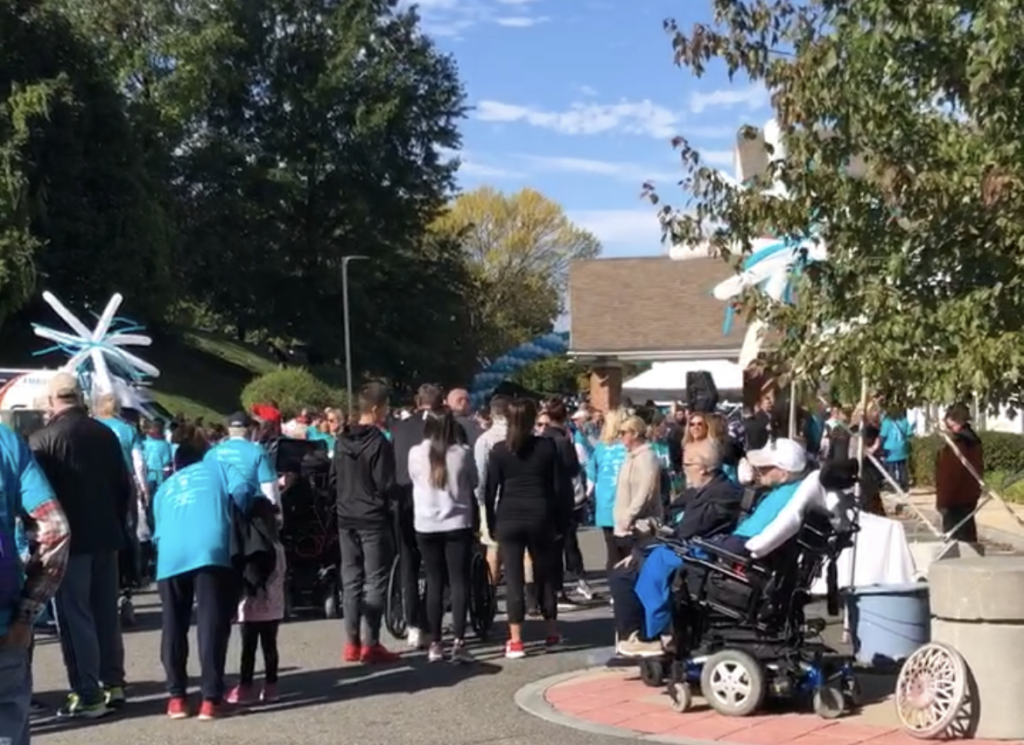
About SimpliHere
The mission of SimpliHere is to ensure efficient care and peace of mind for caregivers and their patients with neurological conditions that impact communication and mobility. Joanna Rosenberg founded SimpliHere to address communication gaps between caregivers and patients. Her personal experience when her mother lived with ALS exposed the challenges of communicating and understanding basic needs, as well as managing daily tasks. Download SimpliHere today!


